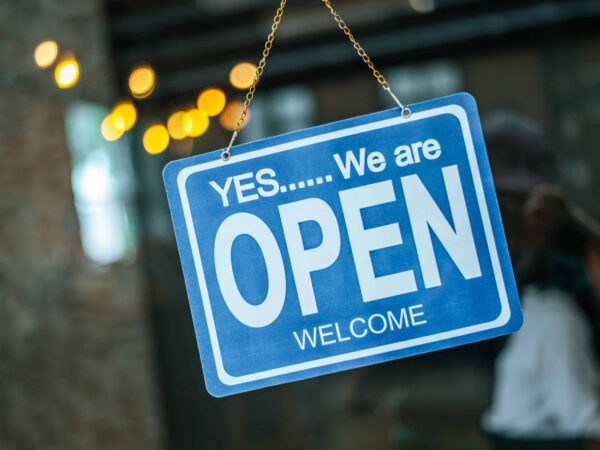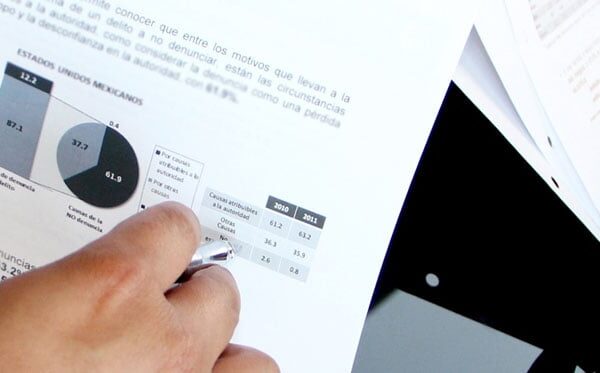Reopening Your Business After the COVID-19 Shutdown
From budgeting and financing, here are important things to consider when reopening your business after the COVID-19 shutdown.

Many small business owners have been going through a difficult time. Across the country, many businesses are struggling to recover financially due to the many-month-long shutdown of business, followed by slow business momentum due to the increased regulations and reduced numbers of customers. As you plan to reopen your business after the COVID-19 shutdown, the details can be difficult to figure out, especially if you aren’t sure how to make ends meet and adhere to strict and overwhelming regulations while restarting operations. So how does one reopen a small business, especially considering the expense that reopening your business entails before a steady stream of revenue resumes? Read on to learn the answer to these questions, and more.
For this article, we interviewed Jennifer Palmer, owner of Nourishing Journey, a wellness center and organic café located in Columbia, MD. She successfully reopened her business as soon as the state of Maryland would allow. Her business is both unique and complicated, affected by many different COVID-19 regulations from several industries, due to the many types of services her business provides. This means she had to do a lot of research when deciding when and how to reopen her business.
Estimate Revenue When Planning to Reopen Your Business
When you are in the planning stage of reopening your business, it’s helpful to have an idea of how much money you think you can bring in before making any other decisions.
Palmer says, “First and foremost, I had to figure out how much I thought I could bring in for revenue, and then come up with a plan for further financing, and then after I had the money figured out, I could focus on operating decisions. I made a rough revenue estimate as to what I thought we might bring in from the café and then also separately for the wellness center. I estimated about 50% of revenue compared to what we had brought in before we had to shut down, and I was pretty accurate with that.”
When making your own revenue estimates, you will have to take different factors into consideration. Depending on your industry and how well it’s doing, how flexible you can be with moving your business to a digital focus, where your brick and mortar business is located within the country, and how well that area is doing economically, your revenue estimates might be higher or lower than 50% of what your business used to bring in.
For example, according to the New York Post: “National retailers—from Shake Shack, Applebee’s, and cap seller Lids—say their Big Apple stores are bouncing back more slowly than even neighboring states like New Jersey and Pennsylvania, which were also hard hit by the coronavirus.”
Other areas of the country were not nearly as hard-hit as some metropolitan areas and might be back to “business as usual” without too much impact on revenues. If you aren’t sure how your area is doing, you might call your local chamber of commerce to see if they have any information to help you with rough estimates.
How to Finance the Reopening of Your Business
Once you have decided on a rough revenue estimate of what you feel you might realistically make during the economic recovery, it’s time to address loans and other forms of working capital you might be able to secure. Before you make too many operating decisions as you plan to reopen, it’s important to figure out how much capital you have to work with and what you might take in from loan programs designed to help businesses through the pandemic. One factor that can help greatly with a smooth reopening and continued operations is increasing the amount of capital you can use in the form of loans to help secure your business and finance operating costs while revenues are temporarily down.
Palmer says, “I applied for every loan and grant that made sense to apply for. I first approached my bank, then applied for an SBA loan and grant, plus other grants as well. Most did not come through because there were so many people who applied. I was glad that I applied for as many loans and grants as I did so that I got something to support the business.”
When considering what financing options to pursue, it helps to speak with someone at the bank where you currently have a relationship. Having someone to help you through the loan application process and answer your questions can help cut through the confusion and help a potentially stressful or overwhelming process go more smoothly.
“Talking to the manager at my bank was very helpful,” says Palmer, “and I was able to navigate the financing process more easily than if I would’ve done it alone. The bank made applying for the SBA PPP loan and extending my credit quick and easy with little information needed for the application process. Whenever I had a question, they had answers within an hour.”
Once you have your loans and other working capital in place, it’s time to make some operating decisions.
Staffing Hours
Palmer shared what considerations drove her decisions when figuring out staffing and her new opening hours. Based on state regulations of certain industries, some practitioners weren’t able to work right away until the state of Maryland eased up on some restrictions. The attendance capacity at events was capped to 10 people or less, which led to a delay before resuming those operations. Plus, practitioners and staff had varying comfort levels of coming back to work, which impacted some of Palmer’s decisions. Considering all of this, plus her reduced revenue estimates, it did not make sense for Palmer to reopen Nourishing Journey at full operating capacity from day one.
When making your own decisions for your business, first check your county and state’s regulations for the industries your business serves to see if you are legally allowed to fully open, or if you need to cut back on or reduce some services based on capacity, social distancing, or other guidelines.
All things considered, Palmer had to do the math on staffing and business opening hours she could provide based on restrictions, revenue estimates, expenses, and overhead. She says about making these operating plan decisions, “The next thing I had to do is contact all of my staff and figure out who was willing to return given their concerns with the virus and the new staffing hours. Then I had to finalize the hours we would be open given the estimation of 50% of revenue coming in. I considered the expense of opening with limited hours. I scaled down the administrative and café service hours to as little as possible considering the circumstances. We didn’t need administrative stuff all day long, seeing as we weren’t as busy. This put more responsibilities onto the practitioners to check-in and out clients, but it allowed us to open with a budget-friendly approach. Instead of having two people work the counter in the café, there is only one. Services may be a little bit slower in the café, but everybody is really understanding and just happy to get their smoothie. Also, with all of this, I had to consider what I could pay them for the hours needed in contrast to what they were currently bringing in with unemployment. I did not want my staff to be bringing in less money than they were before the shutdown. Luckily, it worked out well and I was able to bring back most people with altered schedules.”
Researching COVID-19 Rules and Regulations for Small Businesses
When asked how she found out about the rules and regulations reopening your business after the COVID-19 shutdown, Palmer says, “I looked up the guidelines on the state and county websites for businesses opening back up. Then I had to look for additional guidelines for the café and for our practitioners in the wellness center. We have so many different practitioners that we have many different guidelines we had to look at. Some practitioners had a lot of very specific needs based on their industry guidelines and others could just follow basic guidelines for the state and county.
To give an idea of the many industry guidelines and regulations Palmer needed to consider when reopening, we will list the services her businesses provides. Nourishing Journey offers massage, craniosacral therapy, acupuncture, acupressure, shiatsu; detox services such as colon hydrotherapy, infrared sauna, and ionic footbath; distinct wellness options like Reiki, other modalities of energy healing, reflexology, intuitive guidance, and spiritual coaching; traditional wellness and medical consults; plus classes and other group events. Depending on different industry guidelines and standards, some of Nourishing Journey’s practitioners are licensed, which often means following more restrictive COVID-19 guidelines. Some of Nourishing Journey’s practitioners work directly for Nourishing Journey, and others rent space and run their own practice, which means many practitioners and customer needs and guidelines differ.
“I had to gather up the recommendations and figure out what made most sense given we have a public space with the café, plus a wellness center seeing one-on-one clients, which complicated some of the decisions we needed to make. We have people coming in off of the street for the café with the same entrance as people coming in for the wellness center. We have to be mindful of capacity and social distancing and needed to develop a plan for how to manage that. We had to add signs to the entranceway explaining mask guidelines, keeping distance between each other, not coming in if you’re sick, waiting outside if you are visiting for a wellness appointment until your practitioner can greet you, and also our new hours.
“We needed to figure out appropriate signage, handling foot traffic, taking temperatures, asking patients and clients to wash hands, cleaning rooms thoroughly and appropriately after each session, and tracking everything that we are doing. We’ve also had to worry about how to make sure our clients know our procedures and guidelines so that they are prepared when they come in.”
How to Communicate and Enforce Rules and Regulations
Printing signs to put around your business to remind customers is a good way to enforce the guidelines to that end. Palmer sent an email explaining the rules to her practitioners so they were aware before coming into the business. When it comes to communicating rules and regulations with staff, this will depend on how your staff best receives communications and how complicated the rules are in your industry.
Palmer says, “For the café, some of my staff does not check email. With them, I texted and they were more than happy to jump on board and start working again. I just had to show them what needed to be done and some of the changes in procedures. For example, laundry had to be done differently and the clean laundry would be kept in a different place than the dirty laundry to make sure there was no possibility of cross-contamination. Also, we had to consider things like how often we would wipe down commonly touched surfaces.
“For the wellness center staff and administrative staff, we had different things to worry about. Usually, clients would just come in and fill out their paperwork and wait for the practitioner. Now the client stays in the car and texts the practitioner to let them know they’ve arrived. The practitioner texts the client back to let them know when they can come in. The client needs to make sure they have their mask on before coming in, immediately have to get their temperature taken after they walk in the door, wash their hands, sign a special COVID release form, and then go back to the session room.”
With all this in mind, when asked what the biggest challenges have been, Palmer says, “I think the hardest part about opening back up has been remembering every single new procedure that must be done to meet the regulatory guidelines. Also having to wear the mask all the time has been difficult. Many do not feel well having a mask on for long periods. Breathing in carbon dioxide is not good for anyone at this level of exposure and it has given people issues with feeling like they’re not getting enough oxygen. So we’ve had to get creative with ways that staff can find breaks to take off their mask. The staff knows that they can go into a back room and take off the mask to breathe for a minute or two and then come back out.
“Overall, some of the biggest challenges we’ve had have been around balancing everybody’s needs. Some clients are very scared of the virus and some aren’t at all scared of the virus. Some practitioners have very strict guidelines in order to practice and some don’t. Mixing all of the needs together and trying to keep everybody happy and comfortable has been one of our biggest concerns and is an ongoing concern. We want to make sure everybody knows we are keeping our space clean, safe, and open for business, while also still having the spa-like feel to the appointment.”
More Resources to Help You Reopen Your Business
We’ve provided a slew of resources on financing your business and navigating some of the unique challenges business owners are facing amidst the shutdown and reopening of the economy. You can reach out to a lender to assist you with securing a loan for your small business. Best of luck to you as you move forward to reopen your business after the COVID-19 shutdown. Below you will find other resources that can help you with planning and researching as you make your own plan for reopening your business.
- Resources for Small Businesses Impacted by the Coronavirus (COVID-19)
- Managing Small Business Cash on Hand During Emergencies
- How to Protect Your Small Business from Predatory Lenders, Fraud, and Scams
- Leveraging Small Business Resources to Survive and Thrive Beyond COVID-19
- Adapting Your Small Business Supply Chain in Response to COVID-19
- Crisis Management for Small Businesses: COVID Shutdown
- U.S. Small Business Administration (SBA) Economic Injury Disaster Loan: What You Need to Know
- How to Stay Connected to Your Customers During the COVID-19 Shutdown









